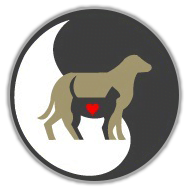Tooth or Lies ~ Kate, PCA
Everyone knows how bad doggy breath can get, but there are a lot of secrets hiding in a pet’s mouth (and not just the latest thing they decided to eat). Dental care is just as important for dogs and cats as it is for humans; we may not think about it too much, but our pets can get cavities, gum disease, dental tartar, and bad breath just like us! However, a dental appointment for our furry friends is a lot more in depth than your dentist visit. A COHAT (Comprehensive Oral Health Assessment and Treatment) is a procedure that can help restore your pet’s pearly whites and keep them healthy and happy. There are also many options for at home dental care that are affordable and not invasive.
Resorptive lesions, bone loss, gingival hyperplasia, slab fractures, abscesses, lions, tigers, and bears, oh my! The world of dental health for your pet can easily become confusing and overwhelming, but hopefully, with proper care, your fluffy friend will not see these issues. Unfortunately, some of them are more common than you would think. Cats are notorious for oral resorptive lesions, which is when the tooth is broken down and absorbed by the body. This affects an estimated 20-60% of all cats and close to three-quarters of those five years of age and older. The cause is unknown. Although we know these lesions are painful, cats are also notorious for not demonstrating overt pain. Signs of pain can be very subtle with these cats. You might have noticed more calculus (tartar) in specific areas, gingival inflammation (possibly the only sign), increased salivation or changes in food preferences. We frequently fail to realize a cat is painful until after they experience behavioral changes (happier and more playful cats) after treatment for these resorbing teeth. In dogs, we commonly see tooth fractures caused by rawhide or other tough toys. These fractures can be painful if they expose the tooth root and can cause infection if left untreated. These are just two common conditions that may be hiding behind your pet’s smile.
Diagnosing and treating these issues requires a COHAT, where your pet must be put under general anesthesia. At Shiloh, our dental procedures start with a complete oral exam and radiographs (x-rays) to identify any problems beneath the gum-line. (This is similar to the x-rays you might receive from your own dentist). We then move onto professional scaling to remove plaque and tartar build-up on each tooth’s crown, or visible part of your pet’s teeth. The full cleaning under the gum-line where periodontal disease lurks is the most important part of our oral health treatment. The teeth are then polished, leaving a completely smooth surface of the tooth which discourages plaque and bacteria from adhering. Finally, each tooth and the surrounding gingiva are examined by your vet, and any abnormalities are recorded.
Since a COHAT is an in-depth procedure requiring anesthesia, we encourage preventative dental care, such as dental chews or tooth brushing. Products that are approved by the Veterinary Oral Health Council (VOHC) are recommended for maximum efficacy. These can include OraVet chews and enzymatic toothpaste. Dental treats are only effective when thoroughly chewed, so if you have a voracious little alligator, be sure to hold onto the treat while they nibble a bit first. On the other hand, some pets don’t tolerate a toothbrush very well. You can train them by putting a favorite semi-solid treat on the brush and letting them chew on it a bit, and gradually, you would be able to add in a brushing motion. For both preventative methods, the action of chewing or brushing is the most important aspect to breaking down tartar.
As always, if you suspect that your pet is experiencing dental pain or needs a cleaning, please give us a call! We are more than happy to answer your questions.
